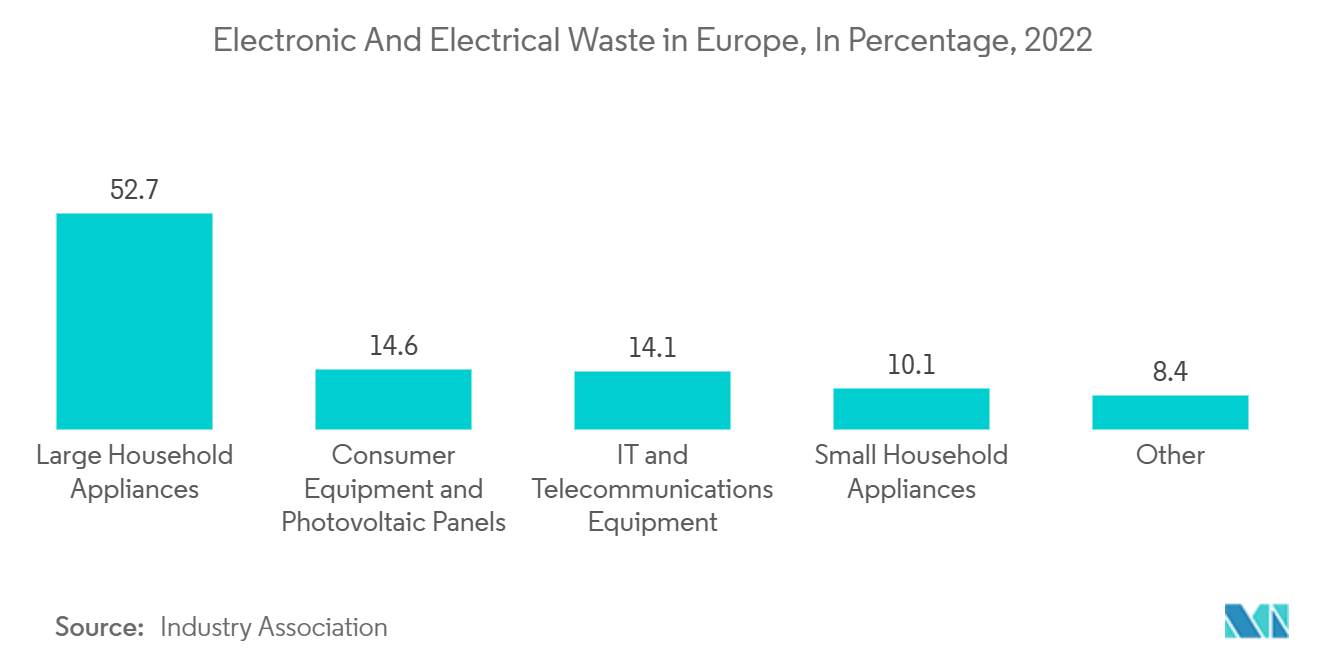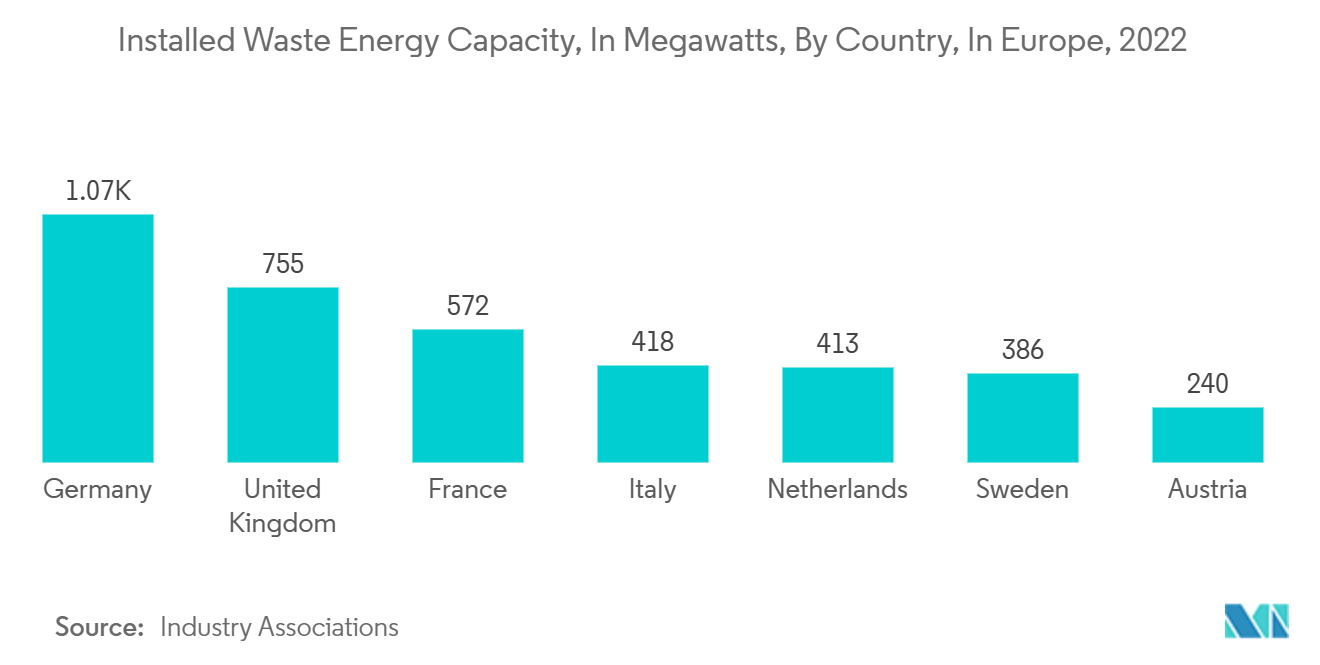Market Trends of Europe Waste Management Industry
Increasing Electronic and Electrical Waste Production in Europe
Modern life is defined by electronic devices and electrical equipment. It's difficult to picture living without them, from washing machines and vacuum cleaners to smartphones and computers. However, the garbage they produce has become a roadblock to the EU's efforts to lessen its environmental imprint. Washing machines and electric stoves are the most commonly collected domestic appliances, accounting for more than half of all e-waste collected. IT and telecommunications devices (laptops, printers), consumer electronics and photovoltaic panels (video cameras, fluorescent bulbs), and small household appliances come next (vacuum cleaners, toasters). Other categories, such as electrical tools and medical gadgets, account for only 7.2 per cent of the total e-waste collected.
Electronic and electrical equipment that has been discarded may include potentially dangerous materials that contaminate the environment and put individuals who recycle e-waste at risk. To address this issue, the EU has enacted rules prohibiting the use of certain substances, such as lead. The European Commission unveiled a new circular economy action plan in March 2020, with one of its main goals being to reduce electronic and electrical waste. The proposal sets specific immediate aims such as establishing a "right to repair" and enhancing reusability in general, as well as the introduction of a common charger and an incentives system to encourage electronic recycling.
In February 2021, the Parliament adopted a resolution on the new circular economy action plan demanding additional measures to achieve a carbon-neutral, environmentally sustainable, toxic-free, and fully circular economy by 2050, including tighter recycling rules and binding targets for materials use and consumption by 2030.

Increase of Waste to Energy Initiatives In Europe
Factors such as the increasing amount of waste generation, growing concern for waste management to meet the need for sustainable urban living, and rising focus on non-fossil fuel sources of energy are driving the demand for waste-to-energy in the region. Furthermore, several European countries plan to focus more on recycling, which saves three to five times more energy, thus restraining the waste-to-energy market.
Emerging waste-to-energy technologies, such as Dendro Liquid Energy (DLE), four times more efficient in electricity generation, with additional benefits of no emission discharge and effluence problems at plant sites, are expected to create significant opportunities for the market players over the coming years. Germany dominated the market across Europe. An increase in the number of municipal waste energy plants and rapid urbanization in the country is driving the growth.
Thermal technology is expected to account for the highest market share in the European waste-to-energy market during the forecast period, owing to the increasing development of waste incineration facilities across Europe. It is estimated that plants, which utilize cogeneration of thermal power (heating and cooling), together with electricity generation, can reach optimum efficiencies of 80%.
In the present scenario, incineration is the most well-known waste-to-energy technology for municipal solid waste (MSW) processing. However, waste-to-energy technologies, particularly incineration, produce pollution and carry potential health safety risks. To reduce particulate and gas-phase emissions, incineration plant owners have adopted a series of process units for cleaning the flue gas stream, which has, in turn, led to a significant improvement in terms of environmental sustainability.


